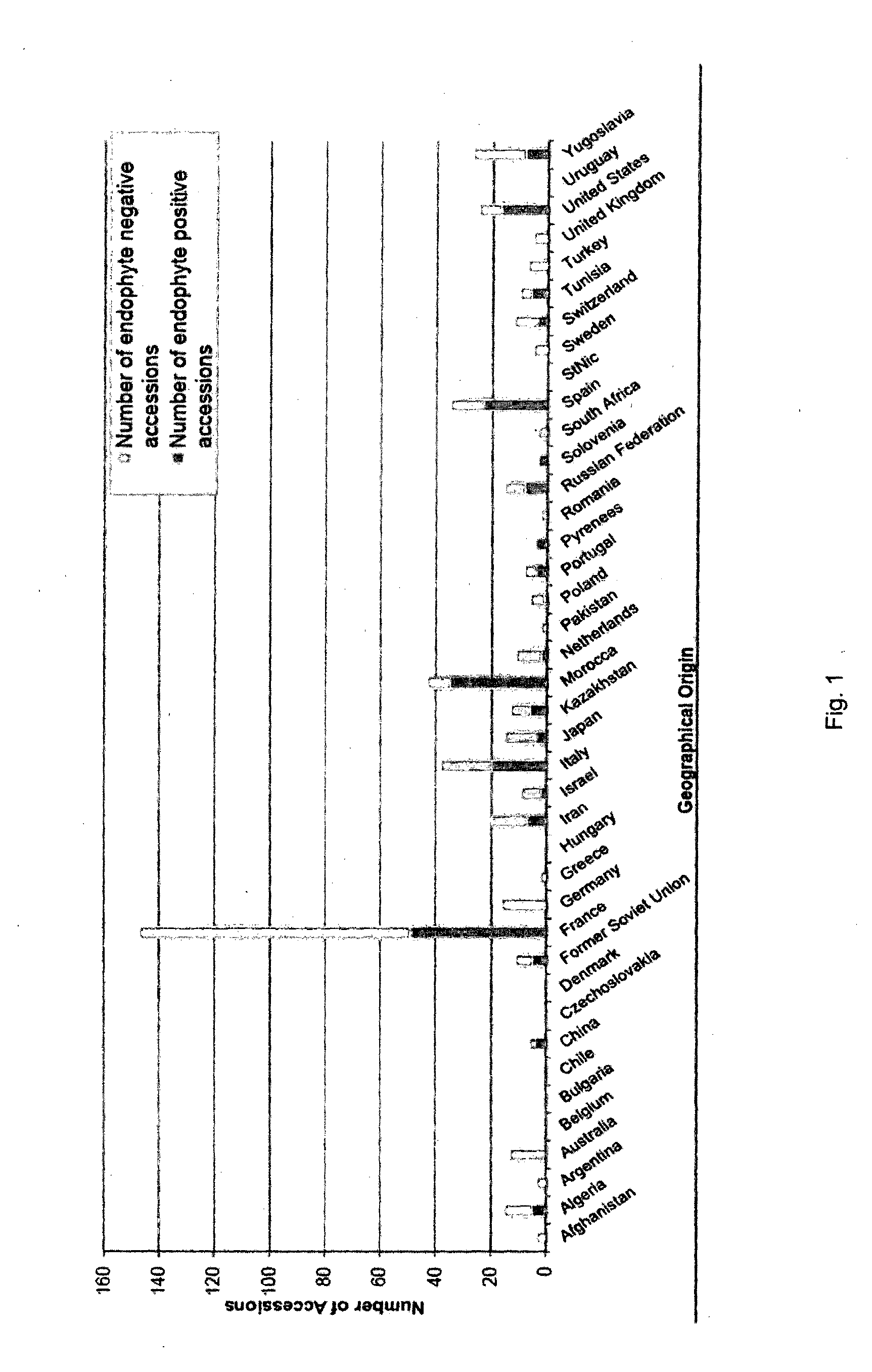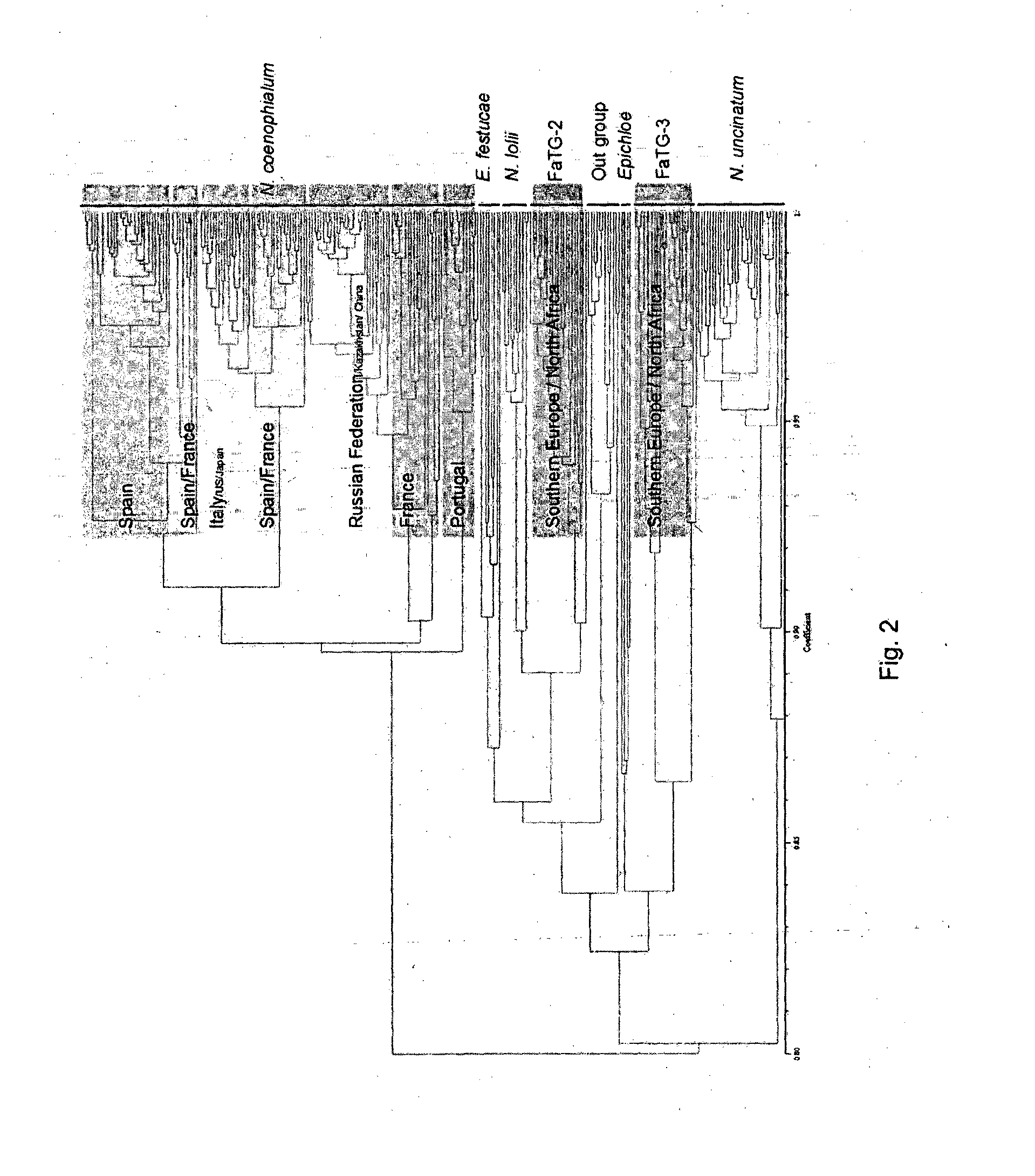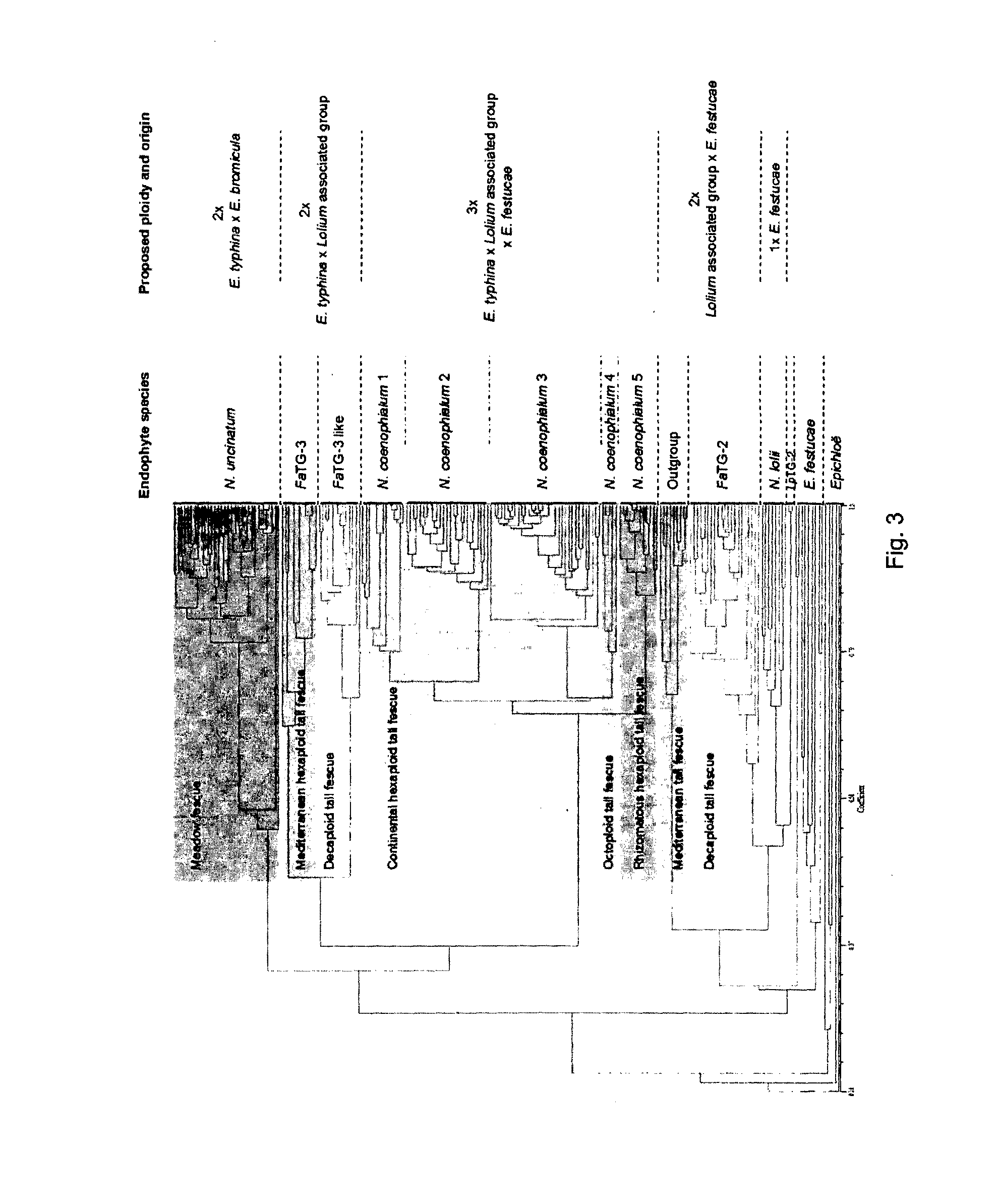Selection of Symbiota by Screening Multiple Host-Symbiont Associations
a symbiota and host-symbiont technology, applied in the field of new methods of selecting and breeding organisms, can solve the problems of reducing herbivore feeding, limiting usefulness, and toxic to grazing animals, and achieving low inoculation frequency, high compatibility, and low inoculation frequency
- Summary
- Abstract
- Description
- Claims
- Application Information
AI Technical Summary
Benefits of technology
Problems solved by technology
Method used
Image
Examples
example 1
A New Paradigm in Forage Grass Breeding
The Old Paradigm:
[0425]Breeding and selection of grass only followed by single endophyte inoculation and symbiota evaluation leading to synthetic grass varieties deploying a single unselected endophyte.
The New Paradigm:
[0426]Ab initio breeding and selection of grass-endophyte symbiota followed by symbiota evaluation leading to synthetic symbiota varieties deploying multiple endophytes.
[0427]For Application in Lolium / Festuca and Brachiaria / Urochloa.
[0428]Next Generation Ab Initio Molecular Breeding of Grass-Endophyte Symbiota.
Symbiota OrganismEndophytecharacteristicLolium perenne (perennial Neotyphodium loliiReduced toxicity toryegrass)grazing animalsLolium arundinaceaumNeotyphodiumEnhanced(tall fescue)coenophialumpersistenceBrachiaria speciesAcremonium implicatumBiotic stresstolerance
New Principles and Approaches
[0429]Extend Concept of Synthetic Varieties to Both Partners of the Symbiotum i.e. Grass Host and Endophyte
[0430]Deploy multiple endo...
example 2
Tall Fescue Endophyte Discovery
[0469]The objectives of this work on discovery and characterization of endophytes in tall fescue (Lolium arundinaceum) were:
[0470]1. Identification and characterisation of novel tall fescue endophytes for evaluation in germplasm.
[0471]2. Development and evaluation of optimised associations between novel endophytes and elite germplasm.
[0472]The endophyte discovery was based on screening 568 accessions to identify endophyte positive plants followed by genotyping 210 endophytes to identify novel endophytes in tall fescue.
[0473]The characterisation in planta of novel endophytes from tall fescue was based on the following steps:[0474]Meristem cultures for tall fescue cultivars established for isogenic host panel[0475]Endogenous metabolic profiles determined for 48 samples[0476]Isolation of 38 endophytes was undertaken[0477]Inoculation of 15-20 endophytes into isogenic host panel was undertaken[0478]Isogenic host-endophyte associations were characterised
Geno...
example 3
Metabolic Profiling
[0487]The experimental design used for semi-quantitative metabolic profile analysis of tall fescue-endophyte associations for the detection of alkaloid production in the endogenous host background is described below.
[0488]A metabolic profile analysis for detection of ergovaline and peramine is shown in FIG. 7.
[0489]Endophytes selected for semi-quantitative analysis of metabolites are shown in FIG. 8.
Metabolic, Profile Analysis for the Detection of Alkaloid Production of Different Fescue Endophytes
[0490]A metabolic analysis of tall fescue-endophyte associations for the detection of alkaloid production including loline, loline formate, peramine, ergovaline and lolitrem B in the endogenous host background is shown in FIG. 9. The alkaloid profile (i.e. lolines, peramine, ergovaline and lolitrem B) of tall fescue-endophyte associations in the endogenous host background for a range of endophyte strains belonging to different endophyte species is shown in Table 2.
TABLE 2...
PUM
| Property | Measurement | Unit |
|---|---|---|
| humidity | aaaaa | aaaaa |
| humidity | aaaaa | aaaaa |
| temperatures | aaaaa | aaaaa |
Abstract
Description
Claims
Application Information
 Login to View More
Login to View More - R&D
- Intellectual Property
- Life Sciences
- Materials
- Tech Scout
- Unparalleled Data Quality
- Higher Quality Content
- 60% Fewer Hallucinations
Browse by: Latest US Patents, China's latest patents, Technical Efficacy Thesaurus, Application Domain, Technology Topic, Popular Technical Reports.
© 2025 PatSnap. All rights reserved.Legal|Privacy policy|Modern Slavery Act Transparency Statement|Sitemap|About US| Contact US: help@patsnap.com



